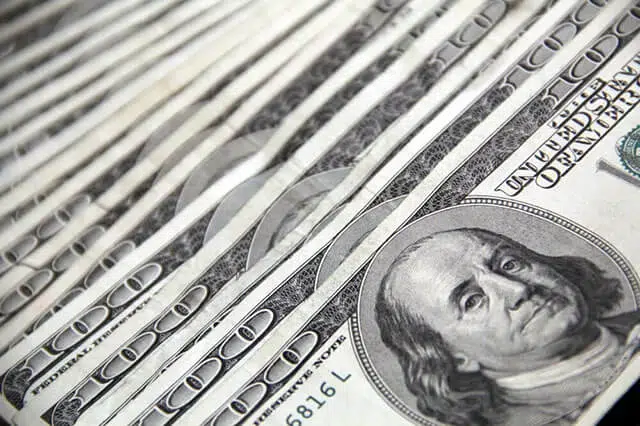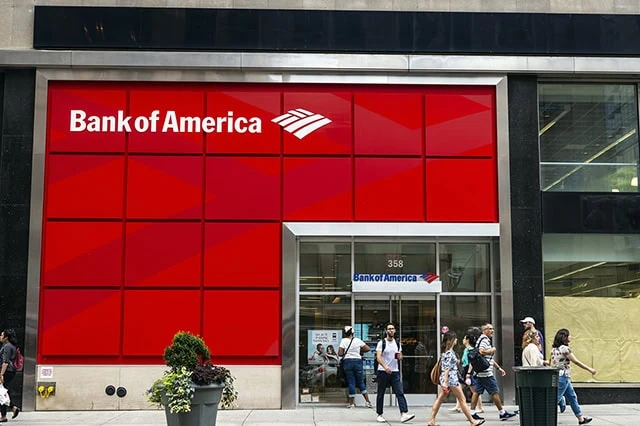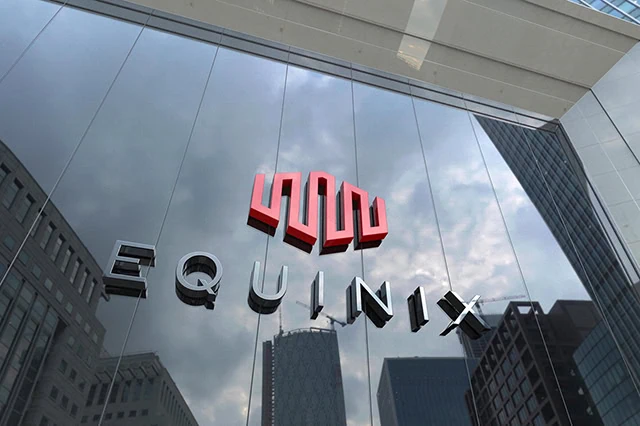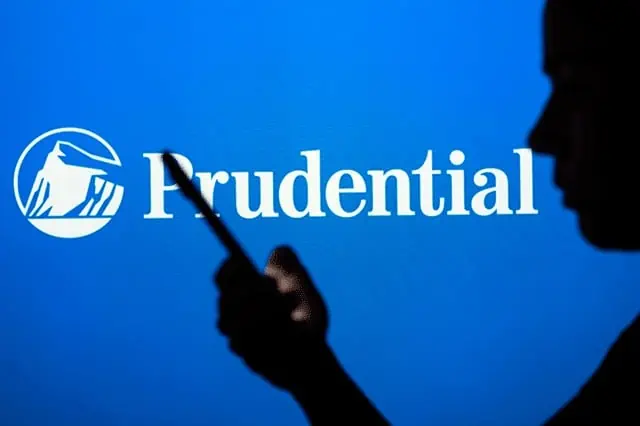Dividend stocks are great investments for any portfolio, even if you’re just beginning to put your money into the market.
A dividend is a distribution of cash from a company to its shareholders. Really, it’s just a form of profit sharing—so, as a general rule, companies that decide to pay dividends must generate meaningful profits in the first place. Furthermore, the best dividend stocks typically pay you regularly (often once per quarter, but sometimes at different intervals), which naturally hints at consistent and sustained success.
And yet, selecting the best dividend stocks is no easy task. Some companies offer only a modest payday now, but they offer the potential of much bigger payouts over time as they experience earnings growth that they then share with stockholders. Others pay dividends that are huge now but are infrequent or unsustainable.
Not all dividend stocks are created equal. Thus, income investors interested in this asset class need to decide how to balance the need for “yield” and the need for stability and consistency in their holdings.
Today, we’ll look at what we believe are nine of the top dividend stocks for beginners in 2025. But we’ll also help new income investors acclimate to the space by explaining some of the basics, which will help you identify new dividend opportunities in the future.
Disclaimer: This article does not constitute individualized investment advice. Securities, funds, and/or other investments appear for your consideration and not as personalized investment recommendations. Act at your own discretion.
Related: The 7 Best Index Funds for Beginners
What Is Dividend Yield?

The most looked-at metric in the dividend universe is known as dividend yield. This simple financial ratio tells you the percentage of a company’s share price that is paid out across a year’s worth of dividend distributions.
Expressed as a mathematical equation, it’s:
Dividend yield = annual dividend / price x 100
Dividend yield normalizes dividend payments regardless of stock price, different quarterly payments, even different payment frequencies (like monthly or annually). For instance, each of the following fictional stocks all have a dividend yield of 2.5%:
- Alpha Corp. currently trades for $40 a share. It pays a 25¢ quarterly dividend, for $1.00 per year in full. ($1 / $40 x 100 = 2.5%)
- Beta Inc. pays $1 in the first quarter, $2 in Q2, $3 in Q3 and $4 in Q4. That’s $10 in dividends for the full year. It trades for $400 a share. ($10 / $400 x 100 = 2.5%)
- Gamma Ltd. pays $2.50 just once per year. It trades for $100 a share. ($2.50 / $100 x 100 = 2.5%)
The idea is to focus on the percent of your initial investment you get back, and help you compare apples to apples.
If you follow this math a step further, you’ll discover that a company can suddenly reach a very high dividend yield in two very different ways: 1.) the dividend growing very rapidly … or 2.) the share price falling very quickly.
Let’s say Alpha Corp., which trades for $40 per share, pays a 25¢ quarterly dividend that yields 2.5%. In a month, it yields 5.0%. Here are two ways that could have happened:
- Alpha Corp. doubled its dividend to 50¢ per share, for a full $2 per share across the year. The share price stays the same. ($2 / $40 x 100 = 5.0%)
- Alpha Corp. kept its dividend the same, but its share price plunged in half to $20 per share. ($1 / $20 x 100 = 5.0%)
Clearly, that 5% yield appears to be much safer and reliable in one scenario than the other.
Related: 8 Best Stock Portfolio Tracking Apps [Stock Portfolio Trackers]
How Does Dividend Growth Work?

Of course, yield is normally a function of what we know now—not how a business might change in the future. Many companies exhibit dividend growth over time.
There’s no universal rule about how companies might raise or reduce their payments, but generally dividend stocks tie these profit sharing plans to earnings growth.
In other words, if a company is making more profits, then they have more cash to spread around to shareholders. And if they hit a serious snag, there’s a chance dividends could be cut or eliminated to shore up finances.
What is a payout ratio?
As with dividend yield, it’s important to normalize the dividend payout ratio for a stock. This is simply the percentage of a company’s earnings per share that is being distributed via dividends. It’s calculated as:
Payout ratio = dividends per share / earnings per share x 100
As an example, a stock that makes $100 million in profits and has 10 million shares of public stock has $10 in earnings per share. And if that company pays $5 annually in dividends, it has a payout ratio of 50% ($5 / $10 x 100 = 50%).
What is yield on cost?
When you look up a stock’s information, the dividend yield listed is based on the most recent dividend and the current stock price.
That yield is often actually different than the one current shareholders enjoy. That yield is called “yield on cost,” which is the payout based on what you paid, at the moment you invested.
Let’s say you buy a stock at $100, and it pays $1 per share. It yields 1.0% when you buy it ($1 / $100 x 100 = 1.0%).
In a year, that stock has doubled to $200 per share, and it also doubled its dividend to $2 per share. If you look up its information, its dividend is still 1.0% ($2 / $200 x 100 = 1.0%).
That’s not your yield on cost, however. You’re still receiving that higher dividend of $2 per share. But your cost basis is still the original $100 you bought the share at. So now, your yield on cost has doubled, to 2.0% ($2 / $100 * 100 = 2.0%)!
Related: 15 Best High-Yield Investments [Safe Options Right Now]
The Best Dividend Stocks for Beginners
If you think all this math is tedious, you’re not alone! But remember: Not all dividend stocks look alike. They come in all shapes and sizes, and metrics like dividend yield and payout ratio help investors make more informed decisions.
As with many things on Wall Street, it’s misleading to look at just a single number in a vacuum. Whether you’re investigating share price or dividend payments or earnings per share, these metrics only matter when you can compare them fairly with another company’s performance.
Now that you have a basic understanding of how companies pay dividends, why measures like dividend yield are important and where we recommend buying these dividend stocks, let’s move on to some of the best options for income investors right now.
Stocks are listed in order of yield, from lowest to highest.
Best Dividend Stock for Beginners #9: Broadcom

- Sector: Technology
- Market cap: $1.7 trillion
- Dividend yield: 0.7%
Broadcom (AVGO) is a prime example of how dividend growth is sometimes more important than headline dividend yield.
Broadcom is one of the world’s largest semiconductor companies. It designs, develops, manufactures, and supplies semiconductor and infrastructure software products for a wide variety of uses, including (but hardly limited to) artificial intelligence (AI), data centers, networking, wireless, storage, and industrial automation.
The company has been an innovator in its own right, but you can also chalk up much of its scale to a history of aggressive merger-and-acquisition (M&A) activity. The company—itself the product of a 2016 merger between Broadcom Corporation and Avago Technologies (hence the AVGO ticker)—has swallowed up the likes of LSI Corporation, Brocade, CA Technologies, VMware, and Symantec’s enterprise security business.
Technology stocks as a group don’t deliver much in the way of dividend yield. Indeed, many of the largest and most dynamic companies out there—such as Advanced Micro Devices (AMD) or Adobe (ADBE)—don’t pay a penny in dividends. That’s because they need to cycle every last cent of profits back into research, development, and other areas that will help further grow the business.
And that’s why Broadcom stands out.
Sure, the sub-1% yield is less than ideal. But Broadcom makes up for that with intense dividend growth, and that can be every bit of rewarding for shareholders who have any patience.
AVGO has improved its quarterly payout by more than 33% annually on average since the Avago-Broadcom merger in 2016. From a practical perspective, here’s what that looks like: Accounting for Broadcom’s 2024 10-for-1 stock split, someone in 2016 who bought right after the merger (at a split-adjusted $13 per share or so) did so at a headline yield of roughly 1.4%. Not only are those shares up by roughly 2,200% since then, but they’re earning an insane yield on cost of more than 18%!
Despite all that, the dividend represents a mere 35% of Broadcom’s expected 2026 profits, leaving all sorts of money to pay for more R&D … and plenty of room to keep expanding the dividend, too.
Related: The Best Mutual Funds for Beginners
Best Dividend Stock for Beginners #8: Bank of America

- Sector: Financial
- Market cap: $393.2 billion
- Dividend yield: 2.1%
Bank of America (BAC) is one of the world’s largest banks, serving roughly 70 million Americans through 3,600 branches and 15,000 ATMs across 39 states. However, Bank of America is much, much more than its consumer business—it also provides financial products and services for small and midsized businesses, large corporations, institutional investors, and even governments.
That breadth of business means a breadth of offerings, which range from checking and savings accounts to commercial loans, trade finance, treasury management, and securities clearing.
The financial crisis of 2008 rocked most of the financial sector, BofA included. Bank of America was forced to cut its dividend from 64¢ per share in 2008 to a mere penny per share in 2009. BAC started to raise its payout again in 2014, though. True, on a nominal basis, the dividend still hasn’t returned to pre-Great Recession levels; however, at 28¢ per share after its last increase announced in July 2025, the stock still yields more than 2%, which is above the financial-sector average.
Bank of America’s roots go all the way back to 1784, and it’s one of the largest U.S. banks by assets. If you’re a long-term income investor, BAC is a financial stock you can believe in for many years to come.
Related: The 7 Best Vanguard Index Funds for Beginners
Make Young and the Invested your preferred news source on Google
Simply go to your preferences page and select the ✓ box for Young and the Invested. Once you’ve made this update, you’ll see Young and the Invested show up more often in Google’s “Top Stories” feed, as well as in a dedicated “From Your Sources” section on Google’s search results page.
Best Dividend Stock for Beginners #7: Equinix

- Sector: Real estate
- Market cap: $82.1 billion
- Dividend yield: 2.3%
Just a moment ago, I mentioned that tech stocks don’t make for good dividend investments. Most startups need to invest aggressively in new staff or new products rather than share profits with investors, and even established tech companies tend to prioritize growth over dividends.
What makes Equinix (EQIX) such an interesting dividend stock, however, is that it’s a kind of hybrid between a traditional income investment and a tech operation.
EQIX is what’s referred to as a real estate investment trust, or REIT—a special class of company that involves property owners and operators. These companies receive special tax considerations, and in return, they must distribute at least 90% of their earnings back to shareholders as dividends.
This particular real estate investment owns data center properties. And it has a lot of reliability, charging regular rent to deep-pocketed tenants who want to buy server space in Equinix’s digital infrastructure empire. After all, everyone wants their data to live on “the cloud,” but the physical hardware to host that data has to live somewhere—and that somewhere is on Equinix’s properties.
EQIX boasts almost half a million interconnections to more than 10,000 customers. It’s the leader in its field with consistent revenue growth (22 years’ worth of consecutive quarterly sales growth, and growing!)—and most importantly for dividend investors, a growing and extremely well-covered payout. Especially if the company continues to expand its top and bottom lines, robust dividend growth could very well be in the cards for years to come.
Related: 15 Best Stock Market Investing Research & Analysis Sites
Best Dividend Stock for Beginners #6: Johnson & Johnson

- Sector: Health care
- Market cap: $450.0 billion
- Dividend yield: 2.8%
From time to time, you might hear or read someone refer to the best dividend stocks as “widow-and-orphan” investments. That’s because they’re the kind of assets you buy and hold forever—or at least until you die and pass them on as inheritance.
Johnson & Johnson (JNJ) is a prime example. It is among the 25 largest companies on Wall Street, with a massive brand and more than 135 years of operations.
It was long a consumer-health giant, but in 2023, JNJ spun off those operations—which included the likes of Tylenol and Band-Aid—into Kenvue (KVUE). But while that modestly reduced the overall footprint of the company, it also sharpened its focus on high-margin drugs and medical devices to ensure future success. Now, the top and bottom lines are driven by products such as inflammation treatment Stelara, multiple myeloma drug Darzalex, and medical technologies such as electrophysiology, biosurgery, and wound closure products.
This company is deeply embedded in the health care system, and that helps maintain JNJ’s status as a top dividend stock that income investors can rely on through any market environment.
From a dividend perspective, the health care giant has raised its payouts for 63 years running—one of the longest track records on Wall Street. So it too is a Dividend King. But JNJ still has a payout ratio of less than 50%, hinting there’s ample headroom for future increases, too.
Johnson & Johnson is also one of the most credit-worthy companies in the world, ranking as one of just two U.S. companies with a top AAA rating for its corporate debt. Microsoft (MSFT) is the other, if you’re curious.
Related: Ready to Invest? Ask Yourself These 10 Questions First
Best Dividend Stock for Beginners #5: Procter & Gamble

- Sector: Consumer staples
- Market cap: $345.0 billion
- Dividend yield: 2.9%
Consumer staples stocks—companies that make goods that are basic necessities—are some of the best dividend stocks because they aren’t prone to the ups and downs of discretionary companies. When times get tough, households spend less on vacations or designer jeans, but they keep going to the grocery store every week.
And when it comes to consumer stocks, Procter & Gamble (PG) is a powerhouse that’s hard to top.
Procter & Gamble got its start in 1837, when it was producing soap and candles. Today, it’s a global consumer-goods behemoth that boasts more than 60 brands, which include roughly two dozen brands that generate at least $1 billion in annual revenues. P&G’s stable is a who’s who of grocery-store staples: Cheer and Tide laundry detergent, Downy fabric softeners, Luvs and Pampers diapers, Bounty paper towels, Charmin toilet paper, Puffs facial tissues, Tampax tampons, Cascade dishwasher detergent … I think you get the point.
The company continues to innovate, even with its legacy brands. In 2024, the company launched Tide evo—detergent in a tile form that requires no extra water and less packaging, helping P&G preserve the profit margins that helps it deliver a longstanding and growing dividend.
Procter & Gamble has one of the most storied dividend histories, including an incredible 135 consecutive years’ worth of cash distributions and 69 uninterrupted years of dividend growth, putting it in the ranks of both the Dividend Aristocrats (companies that have raised their dividends for at least 25 consecutive years) and the Dividend Kings (at least 50 years). P&G’s most recent hike was by 5% to $1.0568 per share quarterly, announced in April 2025.
Beginner investors could hardly do better than this vaunted dividend grower for both stability and income.
Related: 10 Best Micro-Investing Apps
Best Dividend Stock for Beginners #4: Coca-Cola

- Sector: Consumer staples
- Market cap: $294.7 billion
- Dividend yield: 3.0%
Beverage maker Coca-Cola (KO) is another global consumer staples titan—one with more than 130 years of operating history, and operations in 200 nations around the world.
While it’s true that sugary soft drinks might not be a growth business in an age of healthy eating, it’s important to understand that Coke products have strong baseline demand. But it’s hardly reliant on Coke alone; the multibillion-dollar powerhouse owns brands including Vitaminwater, Fuze teas, Powerade energy drinks, Minute Maid juices, and many more.
It’s also worth noting that Coca-Cola has a great deal of institutional (large-investor) demand. Berkshire Hathaway (BRK.B)—the holding company founded by the world’s most famous investor, Warren Buffett—is KO’s largest shareholder. Berkshire holds more than 9% of the company, providing a strong foundation for share prices as well as a mandate for generous and consistent dividends.
That shows in the track record of KO stock: In 2025, the company approved its 63rd consecutive annual dividend increase, making it a Dividend King as well. And as far as future dividend growth is concerned? While Coca-Cola’s 65% payout ratio is somewhat high, it’s not dangerously high. So while you might not expect breakneck dividend growth, KO likely will continue to push its distribution higher.
Best Dividend Stock for Beginners #3: Consolidated Edison

- Sector: Utilities
- Market cap: $35.2 billion
- Dividend yield: 3.5%
Utilities are another sector to consider when looking for the top dividend stocks. Electricity and water are just as important as groceries and cleaning products, and the expensive infrastructure and highly regulated nature of publicly traded utilities means competition is hard to come by. In truth, most U.S. electricity companies are virtual regional monopolies with incredibly consistent demand for their products.
That’s what makes a stock like Consolidated Edison (ED) so attractive to income investors.
“ConEd” and its subsidiaries distribute electricity to about 4 million customers in New York City, as well as several other counties in New York State and New Jersey; and natural gas to 1.2 million more. This dense area of the U.S. is certainly not going to be less reliant on energy anytime soon, translating into a nearly certain stream of revenue for this dividend stock.
This consistency has allowed ConEd, another Dividend Aristocrat, to provide 51 years of consecutive dividend increases to its stockholders. Like with Coca-Cola, the payout ratio is on the high side. However, it’s still plenty manageable at 60% of projections for next year’s earnings, and Edison features extremely stable earnings that can slowly but persistently grow over time—allowing its dividend to expand the same way.
Related: 8 Best Stock Picking Services, Subscriptions, Advisors & Sites
Do you want to get serious about saving and planning for retirement? Sign up for Retire With Riley, Young and the Invested’s free retirement planning newsletter.
Best Dividend Stock for Beginners #2: Prudential Financial

- Sector: Financial
- Market cap: $36.8 billion
- Dividend yield: 5.2%
Understanding that some beginners investing in dividend stocks might not see big banks as attractive as they once were in decades past, Prudential Financial (PRU) offers exposure to the financial sector in a different and more subdued way.
While Prudential does offer wealth management services, its core business comes from rather boring business lines such as life insurance and benefit administration for corporations. Unlike a big investment bank, there’s not really a lot of potential for windfall profits here. It’s just the mundane business of collecting premiums or helping small businesses manage their 401(k) plans.
That said, these admittedly boring business lines provide a lot of stability to operations. Prudential has steadily ratcheted up its paydays lately as a result, with its dividends soaring from 58¢ per share quarterly in 2015 to $1.35 presently. That kind of growth over the past decade or so should make anyone pay attention, even if the company isn’t as dynamic as other financial firms.
The icing on the cake? Even with one of the highest yields on this list, Prudential has a dividend payout ratio of roughly a third of its projected profits for 2026. That means those big-time increases in payouts aren’t just sustainable, but also have room for continued dividend growth in the years ahead.
Best Dividend Stock for Beginners #1: Verizon Communications

- Sector: Communication services
- Market cap: $165.8 billion
- Dividend yield: 7.0%
The top dividend stock for beginners, and one that has obvious staying power, is Verizon Communications (VZ).
It is the No. 1 wireless carrier in America right now, ahead of “Big Three” mates AT&T (T) and T-Mobile US (TMUS). And while there’s occasionally changes in the pole position, we live in an era in which mobile connectivity is a must-have for consumers and businesses alike—meaning there’s little chance of any widespread rollback in customers that would affect this pseudo-triopoly.
What’s more, rather than chase subscriber market share in what has historically been a pretty entrenched marketplace, Verizon has instead focused on average monthly subscriber revenue lately in a bid to squeeze a bit more cash from the same people rather than engage in costly acquisition of new leads from its competitors.
This is the kind of long-term approach that income investors find appealing. Growth-oriented companies often bleed cash as they chase market share, but there are worse ideas than simply harvesting from an existing and loyal customer base to support generous dividend payments. Indeed, VZ just upped the ante on its payout again, delivering a 2% increase to 69¢ per share announced in September.
That’s what VZ has been doing, and what it will continue to do. And with a yield that is double or even triple some of the other stocks on this list, Verizon is definitely one of the best dividend stocks for beginners right now.
Dividend Stock FAQs

Do all companies pay dividends?
Not all companies pay dividends. Some companies choose not to, while other companies cannot afford to.
As you can tell by this list of stocks that pay dividends, the best dividend stocks are normally slow-and-steady companies that have consistent operations. While it might be possible for a small software company or biotech firm to double its share price overnight, these companies rarely pay dividends because they don’t have much in the way of profits—and what they do have, they want to spend on other things, like research and development to continue growing.
Related: The 9 Best ETFs for Beginners
How often do companies pay dividends?
The cycle of paying dividends is always different depending on the company. While it’s generally true that most U.S. corporations opt to pay their shareholders a dividend once per quarter, the dates aren’t fixed.
Specifically, one company might pay you on a January-April-July-October payment cycle while another opts for February-May-August-November.
Complicating things further, some companies pay dividends twice a year, some pay once a year, and some even pay “special” unscheduled dividends.
Related: How to Get Free Stocks for Signing Up: 9 Apps w/Free Shares
What should income investors look for in a dividend stock?
There are a host of things to consider when looking for the best dividend stocks.
First, and foremost, you should make sure you understand the underlying business and its strategy; just because a company pays a dividend doesn’t mean it can’t crash and burn.
If you generally like what you see, then you should consider the quality of the dividends including the history of payouts and the payout ratio as a portion of total earnings.
Then, you should consider the quantity of that dividend and the potential for future growth in payouts.
Do you want to get serious about saving and planning for retirement? Sign up for Retire With Riley, Young and the Invested’s free retirement planning newsletter.
Want to talk more about your financial goals or concerns? Our services include comprehensive financial planning, investment management, estate planning, taxes, and more! Schedule a call with Riley to discuss what you need, and what we can do for you.
Related:






![7 Best Vanguard Dividend Funds [Low-Cost Income] 15 Many hundred dollar bills against a light background.](https://youngandtheinvested.com/wp-content/uploads/cash-dividends-money-folded-bills-1200-600x403.webp)
![5 Best Tech Dividend Stocks [According to the Pros] 16 tech stocks growth market tickers jumbotron 1200](https://youngandtheinvested.com/wp-content/uploads/tech-stocks-growth-market-tickers-1200-600x403.webp)

